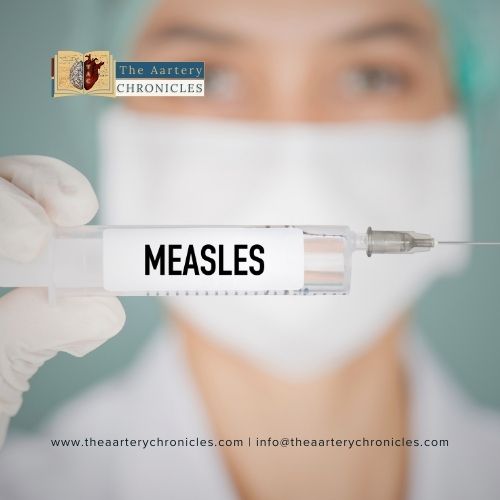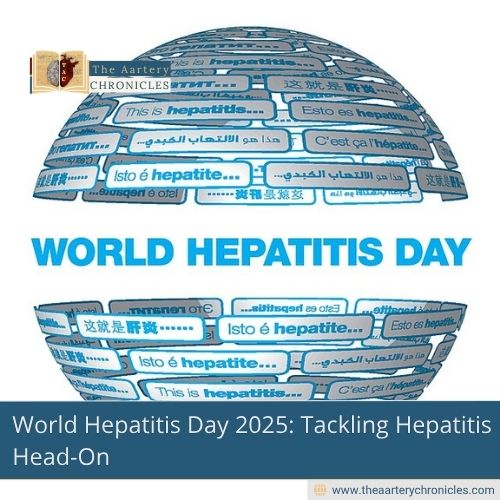
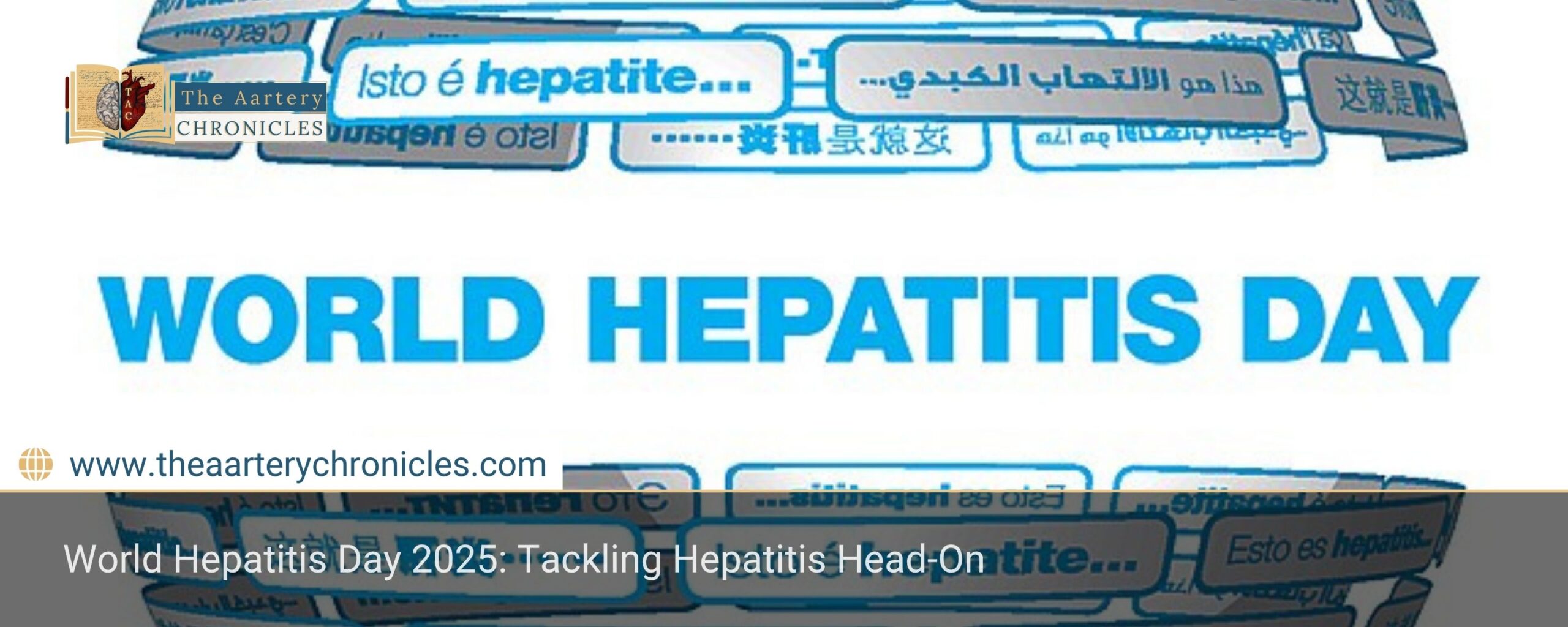
World Hepatitis Day 2025: Tackling Hepatitis Head-On
Introduction
Each year on July 28th, people worldwide come together to observe World Hepatitis Day, raising awareness about viral hepatitis as a vital public health concern. This observance is especially significant for the medical community, as it highlights the critical role healthcare professionals play in the prevention, diagnosis, and management of hepatitis-related diseases. The date marks the birthday of Dr. Baruch Blumberg, the Nobel Prize-winning scientist who identified the hepatitis B virus and pioneered the development of its vaccine—a turning point in modern hepatology.
What Is Hepatitis?
Hepatitis is inflammation of the liver, primarily caused by viral infections, though toxins, drugs, and autoimmune responses can also trigger it. There are five different strains of viruses that cause viral hepatitis:
- Hepatitis A
- Hepatitis B
- Hepatitis C
- Hepatitis D
- Hepatitis E
Infections caused by virus A and E are acute, short-term illnesses that are typically spread through contaminated food or water. In contrast, hepatitis B, C, and D are mainly transmitted via blood and bodily fluids, leading to both acute and chronic infections, increasing the risk of cirrhosis and liver cancer.
2025 Theme: Breaking Down Barriers in Hepatitis Care

The campaign theme “Hepatitis: Let’s Break It Down,” advocates for the removal of barriers—such as financial constraints, healthcare inequalities, social stigma, and systemic inefficiencies—that often delay hepatitis diagnosis and limit access to essential treatment and preventive services.
Despite advances in antiviral therapies and immunization programs, chronic hepatitis B and C continue to present substantial clinical challenges. These infections frequently remain asymptomatic for years, silently advancing to fibrosis, cirrhosis, or hepatocellular carcinoma (cancer). The asymptomatic nature of early-stage disease makes proactive screening and early intervention critical. Fortunately, with timely diagnosis, hepatitis B can be effectively managed, and hepatitis C is now curable in most cases with direct-acting antivirals
This year’s campaign underscores the need to simplify, scale up, and integrate hepatitis services into national health systems. These services include vaccination, safe injection practices, harm reduction, and—most crucially—testing and treatment.
It’s a global reminder that we must act now to expand access, integrate care, and end hepatitis as a public health threat by 2030.
The Global Burden: A Silent Killer
Globally, more than 304 million people live with chronic hepatitis B or C. Each year, hepatitis-related illnesses claim around 1.3 million lives, a death toll on par with tuberculosis. What makes hepatitis especially dangerous is its silent progression—many people are unaware of their infection until severe liver damage has occurred.
Despite the availability of life-saving tools—vaccines, diagnostic tests, and effective antiviral treatments—millions remain untreated due to lack of awareness, healthcare access, and widespread stigma.
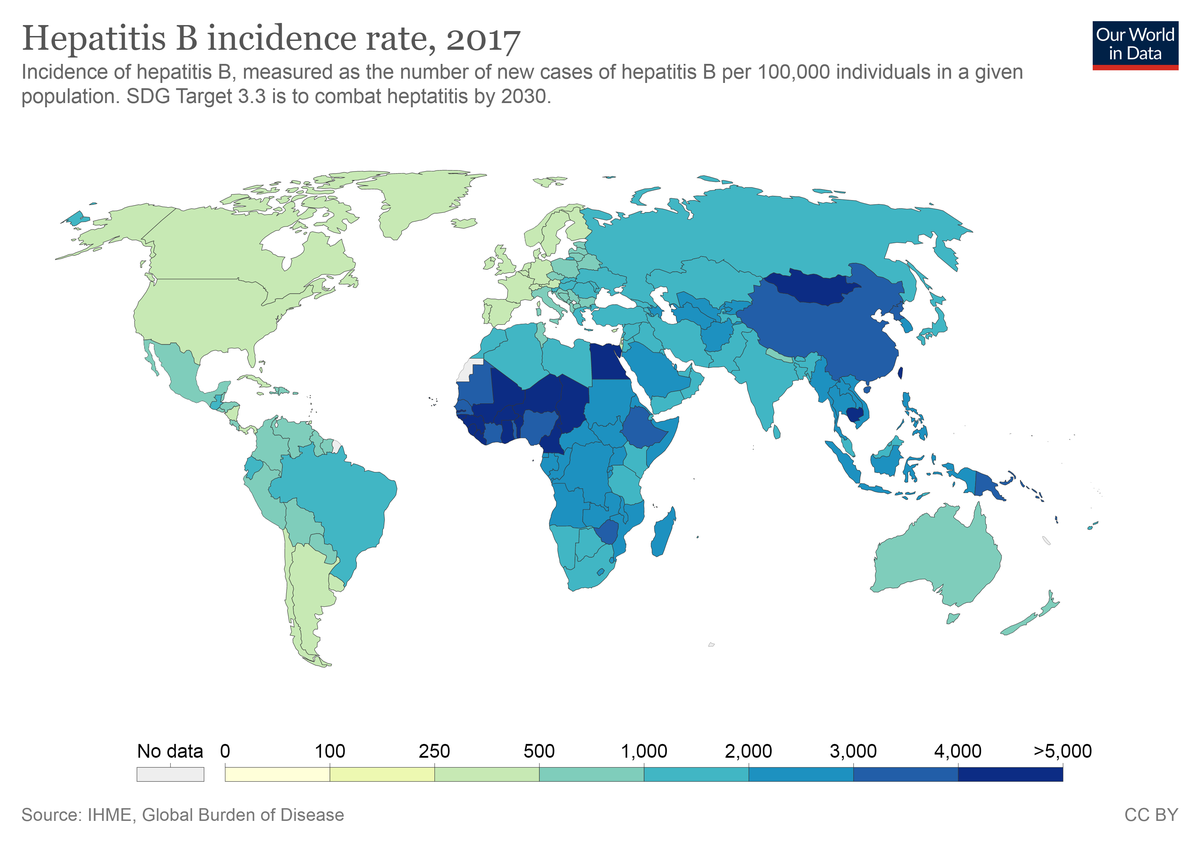
India’s Challenge: A National Concern
India shoulders a significant portion of the global hepatitis burden, with an estimated 30 million people affected by hepatitis B and around 6 million by hepatitis C. Prevalence rates are particularly high in states such as Bihar, Punjab, Odisha, Haryana, and Madhya Pradesh.
Several factors contribute to India’s hepatitis crisis: low awareness levels, gaps in routine testing, poor infection control practices, and limited adult vaccination. For many, diagnosis comes only after symptoms of liver damage become evident.
A Disturbing Rise in Cases
Data from Maharashtra paints a concerning picture. Between 2021 and 2025, hepatitis B cases surged from 9,000 to over 65,000, with 23,000 cases among pregnant women alone. Hepatitis C cases also rose sharply from 1,339 to 9,476. These figures underscore the need for urgent public health intervention, including prenatal screening, birth-dose hepatitis B vaccination, and community-level education.
In Lucknow, SGPGI organized masterclasses to train doctors in better hepatitis care. In Nagpur, medical professionals emphasized the importance of adult hepatitis B vaccination and routine screening—particularly for individuals who missed immunization in childhood.
Main Challenges of World Hepatitis Day 2025
Despite the global momentum, significant challenges remain in the fight against hepatitis in 2025. These barriers continue to hinder progress toward the elimination goals set by the World Health Organization.
Widespread lack of awareness and stigma, notably in marginalized and underserved populations, continue to pose significant challenges. This results in low testing and diagnosis rates. Many individuals live with hepatitis for years without knowing it, due to very mild or completely absent symptoms, and therefore never seek care.
There is also unequal access to vaccines and antiviral therapies, particularly in resource-poor settings where costs are high and advanced treatments are not readily available. Such disparities further widen the gap between rich and poor communities in terms of disease outcomes.
Health system limitations present another major hurdle. These include underfunded programs, lack of reliable data, inconsistent implementation of WHO guidelines, and low capacity for testing and treatment. Weak infrastructure and poor coordination between public health agencies often slow down responses to outbreaks and undermine long-term planning.
In addition, preventive strategies remain inadequate in many regions. Birth-dose hepatitis B vaccination coverage is often incomplete, and harm reduction programs for hepatitis C—such as needle exchange services—are not widely implemented or supported.
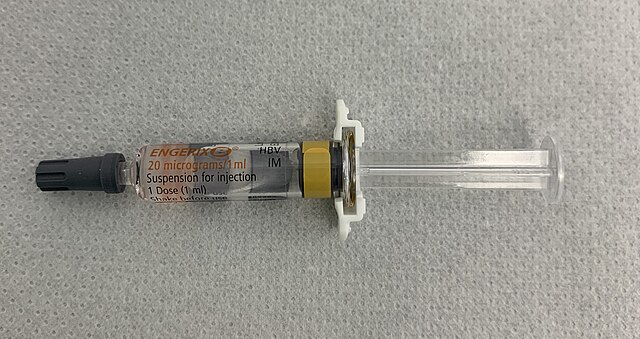
Overcoming Barriers: A Call for Global Action
To conquer the persistent challenges in the fight against hepatitis, a multi-faceted, international effort is essential. The global community must work together to close the gaps in awareness, access, and care. This includes:
- Investments in healthcare infrastructure
- Increased funding for hepatitis programs
- Expansion of public awareness and education campaigns
- Enhanced screening and diagnostic services
- Improved delivery of care, particularly in high-burden areas and among vulnerable populations
Only by addressing these challenges head-on can the world move closer to the vision of a hepatitis-free future.
The encouraging truth is that the tools to eliminate hepatitis already exist. The hepatitis B vaccine is safe, affordable, and offers lifelong protection. The real challenge is not medical, but structural—ensuring early testing, timely treatment, and building strong public health systems that reach everyone, regardless of their socioeconomic status.
Individuals also have a vital role to play. People are encouraged to get tested, seek professional medical advice, and ensure that infants receive timely hepatitis B vaccinations. Just as blood pressure or blood sugar checks are a part of routine healthcare, hepatitis screening should be normalized—especially for high-risk and underserved groups.
Conclusion
World Hepatitis Day 2025 reminds us that while the path ahead is challenging, it is also full of opportunity. With knowledge, investment, and coordinated action, we can break down the barriers that keep hepatitis hidden and deadly.
- World Hepatitis Day 2025
- Hepatitis killing thousands daily, WHO warns in new report | UN News
- India had over 11% of global hepatitis burden in 2022, with 35.3 million cases
- Hepatitis A is getting serious, C is on the decline, but B remains a concern | Mumbai News - Times of India
- IARC marks World Hepatitis Day 2025 – IARC
- Dr Anjali Singh
- Blogs
- 28 July 2025
- 15:00
Reviewed by Dr Aarti Nehra (MBBS, MMST)




